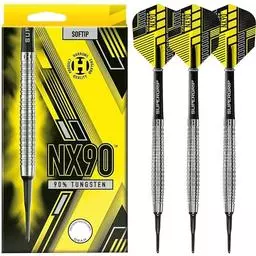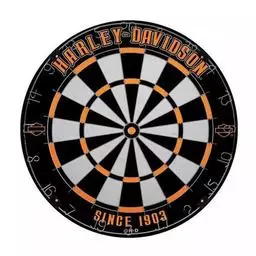Moving a Pool Table
We all know pool tables are not the lightest nor the easiest thing to move, but here a couple helpful hints to make this an easy going process. There are ways to move a pool table.
- First way, is by using a four-wheeled dolly, and if you chose to do it that way it is recommended that you use some kind of cushion between your pool table and dolly.
- The next way would be to gather some friends (preferably strong friends) and with these few items also needed; wood shims and a carpenters level. First you will want to place the level on top of your table to see where it is unbalanced at, next get your friends and make sure each friends lifts a pocket when needed and than place wooden shim under leg. You will want check, recheck and double check that there is no lean or off balance to pool table.

Pool Table Felt and Repair
Pool table felt is the covering that goes over the slate for the billiards table and can come in many color and even style of your choice. The felt is made from wool, but can sometimes be made from a blend of wool and nylon, which is known as" Baize".
Sometimes things happen and you need to make repairs to your table or even refelt it. To refelt your Billiards table, you will need some very helpful tools and items such as;
- The Felt
- Rubber Mallet
- Crescent Wrench
- Staple Remover
- Scissors
- Measuring tape
- Socket wrenches
- Electric Staple gun w/ staples
Now the first step in refelting your pool table is to remove the bolts from the underside of your table (flashlight or some kind of light device may be needed). Remove rails from current position and set aside, take your staple puller or whatever you may chose to use and remove the old staples from where they are. This is very important that you make a mark in the center of your "Feather Strip" thin metal strip and also mark the center of the rail too. Take your screwdriver and gently remove the feather strip and remove old felt. With your piece of felt cut the amount you need, but first you will want refelt your rails. To do that you will need for pieces of felt each measuring 12 inches wide and 6 inches longer than your rails so each piece must hang over both ends, cut off excess felt, do the same for the actual table, but make sure you leave a little bit extra just for the simple fact that you will have to stretch the felt over the table so you will not have wrinkles on your table top. Start trimming the excess off and when your ready to start putting things back together, take the your rubber mallet and lightly tap the feather strip back into place. For the rails you must staple the new felt back into place on the rails. After all that is done take your rails and start putting them back into place and bolt in.
Pool Table Rail Installation
The pool table rail is generally a foam rubber strip attached to a wooden rail, covered with table felt. With regular use, the table felt will wear and the foam rubber may lose its shape and/or bounce, preventing balls from rebounding as they should. When this happens, it's time to replace the rails. You can buy replacement foam rubber and table felt and replace the rails yourself, saving on expensive maintenance costs.
- Remove one of the six rails by unfastening the bolts on the underside of the pool table that are holding the rails in position with the socket set. Remove the rail and move to a separate work station.
- Remove the felt by lifting out any staples from the underside of the rail using the screwdriver or a staple remover. Pliers will help remove any broken staples. Pry off the metal strip holding the felt in position, then pull off the loose felt.
- Remove the foam rubber strip. Measure the length of the existing foam rubber strip using your tape measure. Take a note of this length. Peel away the rubber from the wooden rail.
- Cut a new length of rubber to match the old strip. Sand away any remaining glue from the wooden rail. Apply adhesive to the flat surface of the new strip of rubber and fasten it onto the wooden rail.
- Cut a 6-inch wide strip of felt that's slightly longer than the rail length. Tuck one edge of the new felt into the groove on the underside of the rail and replace the metal strip to hold it in place. Pull the other edge taut and wrap it around the rail. Starting from the center, staple the felt securely in position on the underside of the rail. Slowly work outwards, ensuring the felt is pulled taut throughout the whole length of the rail. Tuck the felt at the corners under the rail and staple securely. Trim any excess felt.
- Position the rail back on the table in the correct position and fasten securely using the original fittings.
- Repeat the steps for each of the remaining rails.
Cleaning Your Billiard Balls
Billiard and pool balls will need to be cleaned on occasion because they actually will pick up scuff marks and debris that will cause them to roll in an untrue fashion. Pine-Sol cleaner can be used in this situation since pool balls are made of either ivory or composite materials that will not be damaged by the cleanser. The key will be to remove the residual cleaner from the balls when you have finished.
Place one cup of Pine-Sol into the bucket and mix with your hand. Make sure it is thoroughly mixed.
Place the pool balls into the mixture and let them sit for 15 minutes. After the balls have soaked, move them around with your hands for a few minutes to loosen the dirt.
Wet the cloth in the mixture and scrub each pool ball individual until the scuffs are removed. Set them to the side to dry. Allow them to dry for around an hour.
Buff each pool ball with the soft cloth. Place each ball in the middle of the soft cloth and rub vigorously to remove the cleaning agent that remains. If you have a surface where you can secure each ball, you can also buff them as if you were shining a shoe.
Replacing Billiard Cue Tips
Pool cue tips have a tendency to become worn or broken through regular use. Replacing them is not a difficult prospect for any player. The whole process is simple and can be done in a matter of only a few minutes. You will only need a few simple tools and a few simple tasks to consider.
- Remove the tip with a very small pliers.
- Clean the ivory collar with sandpaper and remove all of the old glue. Be careful not to scratch the ivory. You only want to remove the glue.
- Place glue on the tip of the cue on the ivory.
- Place the tip on firmly with your fingers. This is a personal choice and is up to the player. They come in two sizes and you want to use a larger one than the tip of your particular cue.
- Apply the tip vise to the stick and clamp it over the top of the new pool tip. Lock it down, but only for the tip; you do not want to damage the shaft by squeezing the side vise too hard.
- Allow the glue to set for at least one hour. Use the tip rounder to remove the excess felt from the cue tip. The rounder looks like a piece of pool chalk but has a rough surface. Style the tip to suit your particular shooting style.
- Use fine grit sandpaper to do the tweaking of the cue to your preferred shape.
Fixing Warped Cue Shafts
A pool or billiards player depends on his skill and the cue in order to win the game. A warped or cracked cue will not produce a fluid shot, and impart the desired "English" onto the ball. As most pool players know, pool halls have an assortment of cues that are usually mishandled or improperly store your cue it van become warped. Fixing a warped cue can be done in a few ways.
- Stand the cue up straight and place it flush against a wall.
- Roll the cue until it moves away from the wall. Mark the center of this region with a pencil. This is the apex of the warp. Turn the cue, making the pencil mark face the wall. Wedge the cue between a solid object and the wall and leave it for a couple of days. This will cause the cue to bend back slightly.
- Tie a cord around the cue just near the tip. Tie the other end to a hook in the ceiling or a closet clothing rod. Allow the cue to hang suspended for a few days undisturbed. This will usually straighten out the cue since most cues are warped because of leaning against a wall for long periods of time.
Don't try to bend the cue over your knee to straighten it out. This can damage the cue further, or it may snap in half.
Take your cue to a professional billiards shop to have it worked on if you can't straighten it out yourself. For two-piece cues, you can replace the front half if it becomes warped.


